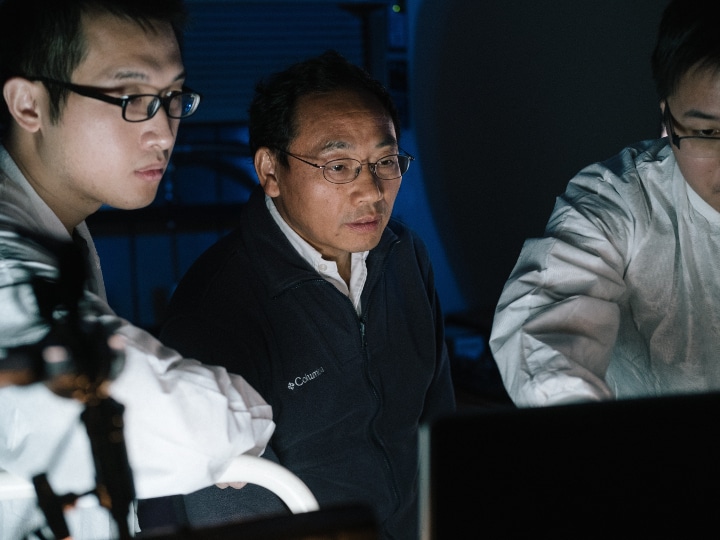Jun 24 2019
The prospect of thermoelectric materials as a clean energy source has triggered the search for materials that can efficiently generate significant amounts of power from heat that is wasted.
 Physicist Zhifeng Ren, center, director of the Texas Center for Superconductivity at the University of Houston, lead a project to resolve the problem of asymmetrical thermoelectric performance. (Image credit: University of Houston)
Physicist Zhifeng Ren, center, director of the Texas Center for Superconductivity at the University of Houston, lead a project to resolve the problem of asymmetrical thermoelectric performance. (Image credit: University of Houston)
Scientists recently reported a huge step forward, publishing in Science Advances the discovery of a new insight for asymmetrical thermoelectric performance, the occurrence that happens when a material that is very efficient in a form which transmits a positive charge is far less efficient in the form which transmits a negative charge, or vice versa.
Zhifeng Ren, M. D. Anderson Chair Professor of Physics at the University of Houston, director of the Texas Center for Superconductivity at UH and the paper’s corresponding author, said they have created a model to explain the formerly unaddressed difference in performance between the two kinds of formulations. They then used the model to envisage promising new materials to produce power using the heat wasted from power plants and other sources.
The scientists already knew that thermoelectric efficiency relies on the material’s performance in both forms, referred to as “p-type” and “n-type” for transmitting a positive and negative charge, respectively. But most materials either do not exist in both formulations or one type is better than the other.
Promising New Material Synthesized
It is viable to develop effective thermoelectric devices using merely a p-type or n-type compound, but it is easier to engineer a device that has both types; Ren said the ideal performance would happen when both types display similar properties.
The scientists synthesized one of the predicted materials, a zirconium-cobalt-bismuth compound, and claimed a measured heat-to-electricity conversion efficiency of 10.6% at both the cold side, about 303 K, or about 86 °F and the hot side, about 983 K (1,310 °F) for both the p-type and the n-type.
Jun Mao, a post-doctoral researcher at UH and the report’s first author, said they established the asymmetrical performance of certain materials is connected to the fact that the charge travels at different rates in the two kinds of formulations. “If the charge movement of both the positive charge, for p-type, and the negative charge, for n-type, is similar, the thermoelectric performance of both types is similar,” he said.
Being aware of that, they were able to use the mobility ratio to forecast the performance of formerly unexplored formulations.
“When the thermoelectric performance for one type of a material has been experimentally studied, while the other type has not yet been investigated, it is possible to predict the ZT by using the identified relationship between the asymmetry and weighted mobility ratio,” the scientists wrote. ZT, or the figure of merit, is a metric used to establish how efficiently a thermoelectric material changes heat to electricity.
New Model Predicts Highly Efficient Materials
Hangtian Zhu, a post-doctoral scientist at UH and the paper’s other first author, said the subsequent step is establishing how to formulate the equivalent type of material, once a material with a high efficiency in either p-type or n-type is found.
That can necessitate experimentation to establish the ideal dopant – scientists modify performance by incorporating a minute amount of an extra element to the compound, called “doping” – to enhance performance, Zhu said.
That is where the new insight into asymmetrical performance has a role to play. Zhu said by predicting which compounds will deliver high performance in both types, scientists are motivated to continue hunting for the ideal combination, even if early attempts were not successful.
Other scientists who were part of the project: Qing Zhu and Zihang Liu, both of UH; Yumei Wang of the Beijing National Laboratory for Condensed Matter Physics; and Zhenzhen Feng, Jifeng Sun and David J. Singh of the University of Missouri.